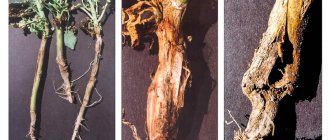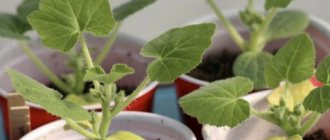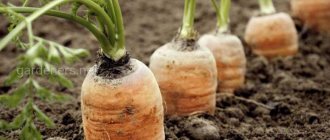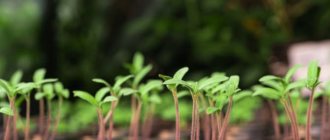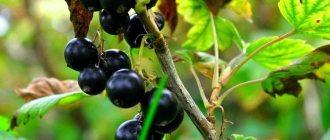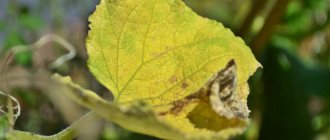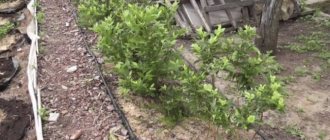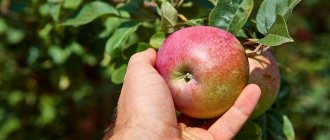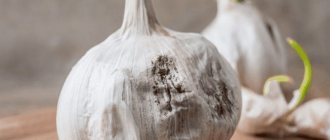Rotting of onions in the garden can occur in different ways. Sometimes the underground part is affected, sometimes the feather. In each case, you need to start by looking for the cause. After its detection, you can proceed to saving the crop.
There are 5 main reasons for onions rotting in the garden:
- Poor quality seed material.
- Inappropriate place for a garden bed.
- Incorrect agricultural technology.
- Onion diseases.
- Insect pests.
Let's look at all the problems mentioned and how to eliminate them in more detail.
Reason 1. Poor quality seed material
As we know, the apple doesn’t fall far from the tree. Carefully inspect the seedlings. If you have low-quality seed material, then you should not expect that a rich and healthy harvest will grow from it. Signs of unsatisfactory quality of onion sets:
- the color of the protective scales is not typical for this onion variety;
- unpleasant (damp, putrid, etc.) smell of the seeds;
- wet upper scales;
- mechanical damage to the bulbs.
Ways to solve the problem:
- Purchase seed material only from trusted and reliable sellers.
- You shouldn’t delay purchasing seedlings until the last moment, because... there will be no choice and you will have to take what is left - and this is usually not the best product.
- If you grow onion sets yourself, dry the bulbs thoroughly before sending them for storage, and in winter, check their condition from time to time and remove low-quality material.
- Disinfect the seedlings before planting. To do this, put it in a dark pink solution of potassium permanganate for 20 minutes or place it in a solution of copper sulfate for 8-10 minutes (1 tsp per 10 liters of water). After disinfection, rinse the bulbs under running water and dry.
How to prevent rotting
The measures that are needed to prevent onion rotting follow from the described causes of the phenomenon. Prevention consists of the following:
- correct crop rotation;
- selection of disease-resistant varieties;
- pre-planting preparation of sets and seeds;
- moderate watering and proper fertilizing;
- weed control;
- sowing carrots next to onions.
It is important to harvest on time and thoroughly dry the onions before storing them. In the storage, you should strictly observe the temperature and humidity conditions, sort out the onions at least once a month (and more often at first), rejecting suspicious specimens. Only bulbs with dry and thin necks, without the slightest damage, should be stored.
After harvesting, onions are dried in a ventilated area for at least two weeks.
Reason 2. Inappropriate place for the garden bed
Another reason for onions rotting in the garden is the wrong location. When choosing a bed, you need to take into account the preferences of the crop that will grow there. What does onion like and what doesn’t like?
Damp area
In a garden bed located in a low area, where water often stagnates, as well as in areas with a high groundwater level, onions will feel very uncomfortable. In conditions of high humidity, the bulbs may begin to rot.
Ways to solve the problem:
- Plant onions in sunny, well-ventilated places.
- If you have no choice and you are forced to plant onions in a damp place, arrange a high bed for it and take care of drainage.
Failure to comply with crop rotation
If you plant onions in the same place every year, a large amount of pathogenic microflora accumulates in the soil over time. When new onion plantings appear, bacteria living in the soil begin to harm them and can cause rotting of the bulbs.
The lack of crop rotation also negatively affects soil fertility. Onions annually take the same useful substances from the soil. As a result, over time, their number becomes negligible - and the culture begins to experience a shortage of the elements it needs. This is another reason that onions rot in the garden.
Ways to solve the problem:
- Crop rotation is a necessary agrotechnical technique when growing any garden crops, and onions are no exception. Return the onion to its original place no earlier than after 3-4 years.
- You can’t plant onions not only after crops of the Onion family (for example, garlic), but also immediately after some other crops: parsley, radishes, parsnips, radishes. The best predecessors of onions are: tomatoes, potatoes, peppers, cucumbers, zucchini, beets, etc.
- If this is not possible, sow any green manure except clover: they can make the soil more fertile in a short time. The best choice is legumes.
Stem nematode
What causes onions to rot on the vine? A small thin worm is a dangerous crop pest. It overwinters in the soil, in bulbs and infected seedlings. The insect remains dormant for 2 years. Under favorable conditions, it wakes up and destroys the crop.
The parasite penetrates into the plant through the stomata of leaves and from the bottom side, laying eggs in the infected tissue. Adults and larvae feed on the sap of the head and molt several times.
Sick root crops lag behind in development. The cotyledon feather is swollen and unnaturally curved. When cut, the tissues have a loose structure, and the scales are unevenly thickened. When pressed, the turnip feels soft. The dug out head is very moist and has a specific aroma. During storage, rotting begins.
How to fight nematodes? Following crop rotation rules will minimize the chances of infection. Sevok is carefully selected or purchased from trusted sellers. Before planting, it is important to soak the raw materials in hot water - from 45 to 55°C.
Reason 3. Incorrect agricultural technology
One of the main reasons that onions rot in the garden is improper care.
Overwatering
Onions do not tolerate drought well, especially at the beginning of the growing season. However, waterlogging is more dangerous for it. Excessive watering is especially dangerous on heavy clay soils. When there is an excess of moisture, when the soil does not have time to dry out and the bulbs are constantly in a humid environment, preconditions arise for the development of diseases and the occurrence of pests. As a result, the onions growing in the garden begin to rot.
A similar problem occurs in damp summers, when it rains constantly and the soil in the garden bed is constantly damp.
Ways to solve the problem:
- Watering onions should be done only after the soil has dried. At different stages of the growing season, onions have different moisture needs. It needs the greatest amount of water at the beginning, during the growth of the above-ground part. In the middle of the season, when the root system increases and the onion itself begins to extract moisture from deeper layers, its amount must be reduced, and watering should be stopped altogether two weeks before harvesting.
- If there are prolonged rains, stretch arcs over the onion bed and cover them with film - this way you can protect the crop from excessive moisture. However, do not forget to regularly ventilate the plantings.
Excess nitrogen fertilizers
Onions, like most garden crops, love fertile soil. However, it is better to underfeed it than to overfeed it, especially when it comes to nitrogen fertilizers. At the beginning of the season, when the green mass is actively growing, onions need a large amount of nitrogen, and then the need for it decreases. When large doses of this element are added, it is not completely consumed, causing the bulbs to soften and can lead to their rotting.
Ways to solve the problem:
- The amount of nitrogen mineral fertilizers must be strictly dosed.
- It is better to apply organic fertilizers with a large amount of nitrogen (chicken droppings or rotted manure) to those beds where you plan to plant onions in the fall. In this case, by spring their quantity in the soil will reach the optimal level.
- If there is excess nitrogen in the soil, water the beds with an infusion of ash. To prepare it, pour 1 liter of ash into a bucket of water and leave to infuse for several hours. After this, dilute with water in a ratio of 1:3 and water the plantings.
Plucking Feathers
Many summer residents cannot even imagine how the habitual tearing off of the feathers of onions that are grown for winter storage ends. But this process also leads to rotting of the bulb. The fact is that along the torn feather, which after removing the top has turned into a tube, rain and dirt fall directly into the middle of the bulb. The water trapped inside becomes an excellent breeding ground for bacteria. As a result, the bulb begins to rot.
Ways to solve the problem:
Plant the onions that you grow for feathers and the onions that you grow for heads in different beds. We wrote about this in more detail.
- Why onions on a feather and onions on a head are different beds
Are you used to plucking a feather from an onion bed? Don't be surprised if the bulbs grow weak and don't store well.
Cervical rot
When the soil becomes waterlogged, putrefactive bacteria develop on the surface. If the fungus appears on the ground after sowing, the first shoots will be infected. Bacteria spread on the stem, at the point of contact with the soil. Rotting of the neck occurs. The bush does not develop, the seedlings die.
View this post on Instagram
Publication from I REJOICE, SING, BAKING, PASHING, WRITING (@kycherova_tatyana) August 15, 2022 at 9:23 PDT
Neck rot can also develop in adult root crops with excessive soil moisture. In this case, the turnip is affected from above. The leaves turn yellow and dry out. External and internal scales become soft, covered with unpleasant mucus, which is accompanied by an unpleasant odor:
- affected plants are removed from the garden bed;
- It is recommended to remove the remaining root vegetables and heat them. They are placed in the oven. Temperature 50 C; treatment continues for up to 4 hours. Replanting is carried out after soil disinfection;
- remove the top soil;
- they are treated with the following drugs: “Fitosporin”, “Baktofit”, “Trichodermin”;
- In the future, the watering regime is observed.
Before sowing, it is recommended to treat the soil with Siyanie-1. It contains bacteria that prevent the development of fungus and bacteriological microflora. The drug is used as a prophylaxis against powdery mildew, gray rot, rust, and other fungal diseases.
Reason 4. Onion diseases
Onions often suffer from various fungal and bacterial diseases. Onion bacteriosis, fusarium, various rots, downy mildew (downy mildew) and other diseases can cause onions to rot in the garden. The causes of the lesion may be different. In one case, it is soil filled with fungal spores. In the other there is infected seed material. Sometimes the cause of the disease can be weather conditions - cold and damp summers. Errors in care (thickened plantings, excessive watering, overdose of fertilizers, etc.) can also lead to similar consequences. In any case, the fight against the disease must begin immediately after the first signs appear.
Ways to solve the problem:
- If affected specimens are found, you should immediately remove them and those plants that are nearby.
- Water the bed with a decoction of red pepper (pour 100 g of pods into a bucket of water and cook for 2 hours, then cool and strain), infusion of tobacco and ash, or Bordeaux mixture.
- For severe damage, use industrial fungicides, such as Abiga-Pik, Oksikhom or Fitosporin-M.
- The most dangerous onion diseases and measures to combat them
The onion rots right in the garden, or its feathers turn black and fall off. Perhaps he is infected with one of the dangerous diseases. Let us help you determine which one.
Fusarium
With fusarium, rot begins to develop in the root area. The fungus affects the entire root crop. Metabolic processes are disrupted, the leaves turn yellow and dry out. The plant dies.
Igor Nikolaev
auto RU
Unfortunately, plant growers notice pathology when the turnip is already completely affected by putrefactive bacteria. It is impossible to save the plant, but pathology can be prevented:
- Before planting, the soil is treated with iodine solution: 3 ml/5 l; spray the snow;
- additionally introduce fungicides: “Topaz”, “Quadris”, 30 ml/10 ml;
- seedlings are treated with a solution of hydrogen peroxide and potassium permanganate.
During the preparation of the soil, all organic matter that has not had time to rot is removed from the site: stems, roots, fruits of plants. Onions are fed only with mineral fertilizers, following their instructions for use and the vegetation characteristics of the crop.
Reason 5: Pests
Sometimes summer residents are perplexed: they observed crop rotation, applied fertilizers in reasonable quantities, did not overdo it with watering - but for some reason the onions still rot in the garden. The cause of onion rotting, in addition to all of the above, can also be insect pests. The most common of them are the onion fly and the onion hoverfly. Their appearance leads to yellowing of feathers and rotting of the bulbs.
Ways to solve the problem:
- The best option is to prevent pests from appearing. This cannot be achieved without preventive measures. Soaking planting material in potassium permanganate will help destroy insect larvae if the seedling has been infected.
- Every week, pollinate the onion beds with ash or tobacco dust.
- Plant onions in close proximity (or even in the same bed) with carrots: both pests cannot tolerate the carrot aroma.
- Mulch the beds with rotted manure or peat.
- Top 7 most dangerous onion pests
These onion pests can destroy the crop in a matter of days. Do you want to know the enemy by sight and win this battle? We will try to help you!
We hope our tips will help you protect onions from rotting and grow a rich harvest of healthy vegetables.
What to do to prevent onions from rotting in the garden
Careful preparation of the soil and sowing, careful and proper care of the crops, long-term drying of the harvested crop in a warm place - all this will help prevent the plant from rotting and preserve it for future sowing and consumption.
To protect crops from parasites and diseases, it is necessary to promptly treat them with special insecticides and fungicides, and pollinate them with tobacco dust or ash. You can protect onions by simply planting them next to carrots, celery and parsley, which have an odor that is unpleasant to parasites.
Selection of resistant varieties
It is important to plant only strong bulbs, those varieties that are resistant to parasites and pathogenic bacteria. Agronomists prefer the following onion varieties:
- Moldavian.
- Golden.
- Early yellow.
- Strigunovsky local.
- Sturon.
- Texas yellow.
You should also take into account the climate and conditions for growing seedlings in order to choose the variety that will grow as healthy and strong as possible.
Compliance with agricultural technology and care
Agronomists advise that in order to get a good onion harvest, carefully prepare for planting and follow the rules of crop rotation.
In addition, it is worth:
- Disinfect seeds and soil with chemicals.
- Dry the seedlings before planting.
- Remove weeds and loosen the soil in a timely manner.
- Do not over-moisten the soil.
- Completely remove crop residues from the ground.
One of the most important rules for caring for onions is to prevent the beds from becoming waterlogged; to do this, form a drainage layer in advance and mulch the beds.
Storage
Another reason that turnips rot is improper preparation and maintenance of the crop. During harvesting, the bulb may be injured. Microbes enter the wound and begin to destroy it from the inside. Such an element will become a source of contamination for all products.
If you leave a short neck on a turnip, then fungi will penetrate through it into the middle. The recommended length is from 3 to 6 cm. Such a “tail” will become a reliable barrier to destruction.
Why do onions still rot? It is important to rid the scales of excess moisture. Before storing the crop, it must be thoroughly dried. To do this, the products are left for several days under canopies or in a well-ventilated area.
We figured out why onions rot in the ground and during storage. The recommendations given will help identify the problem and also tell you what needs to be done so that the crop does not start to disappear.
